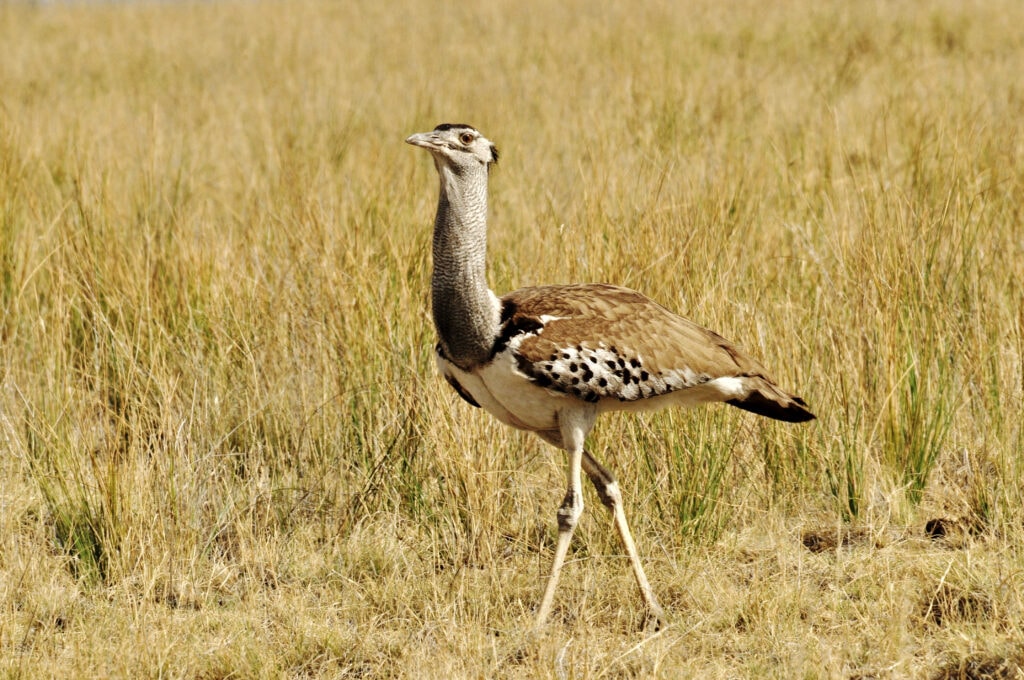American birders may not be very familiar with bustards. These large terrestrial birds are found in the grasslands and steppes of Eurasia and Africa. The Great Bustard and the Kori Bustard are both sometimes cited as the world’s heaviest flying birds, however the Smithsonian National Zoo gives this title to the Kori Bustard. Bustards are known for their gregarious mating displays. Though they are often beloved in their native regions, many bustard species are considered to be vulnerable or declining. Some, like the Great Indian Bustard are critically endangered.
Related Article: Examining the Conflict Between Black Vultures and Farmers
Their threatened status is one of the reasons that scientists working on conservation genomics have sequenced the genome of the Great Bustard. Conservation genomics is an emerging science that seeks to gain insight into the evolutionary history and biodiversity of a species by studying its genetics. Conservationists concerned with declining global elephant populations use conservation genomics to identify levels of biodiversity and attempt to promote genetic health and disease resistance. You may have heard of the “genetic Noah’s Ark” project, which seeks to preserve the genomes of 66,000 vertebrates on earth, preserving key information about these species for future generations to study regardless of the future state of the planet or its wildlife.
The “Noah’s Ark” project might seem like a grim sort of “back-up plan” in case of extinction, but genomic conservation can do a lot of good for living species. Not only that, it can reveal fascinating and unusual insights into the genetic ancestry of animals. This is the case for the Great Bustard. Scientists studying the bird’s DNA found a well-preserved carcass in a cold region of China, bypassing the need to perform invasive testing on a living bird. They then sequenced its genes to surprising results.
Bustards belong to the family “Otididae.” It is a unique avian family with no close genetic relatives. The family consists of bustards, floricans, and korhaans. All of which are large terrestrial birds capable of flight. What their genes revealed is a distant connection to a very different family. The family “Musophagidae” consists of the Turacos. Turacos are much smaller frugivorous birds endemic to Africa. The genes of the Great Bustard suggest that bustards and turacos shared a common ancestor more than 46.3 million years ago, before splitting into their own unique families. Their connection is very old and very distant, but the echoes of their shared lineage is contained within their genes.
While this new insight may not be the savior of the threatened bustards of the world, it is proof that there is a wealth of information waiting to be discovered within the DNA of our planet’s wildlife.
Popular Article: Spoonbill Spotted in Wisconsin for the First Time Since 1845

